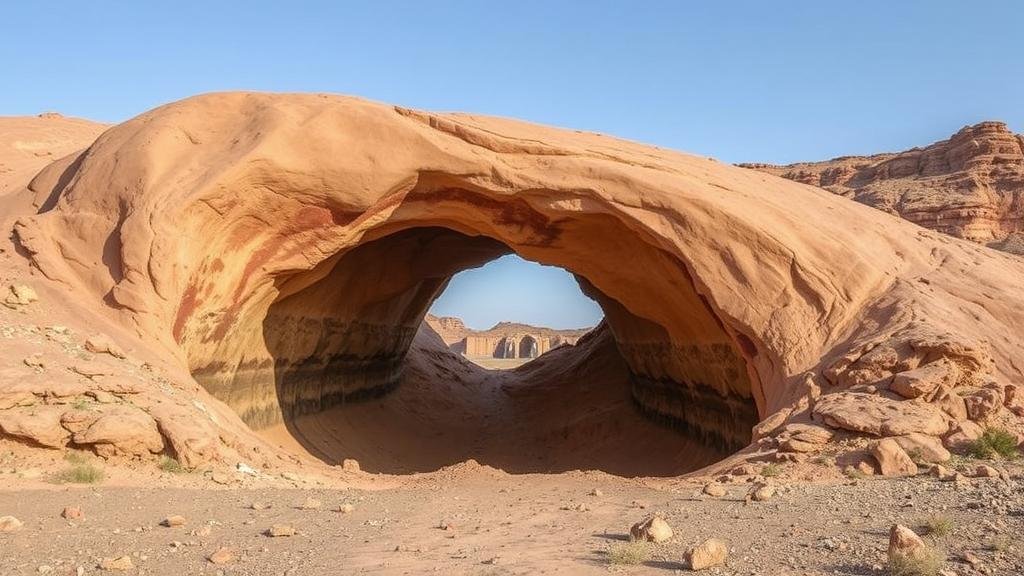Investigating the geological origins of the “Door to Hell” in Turkmenistan.
Investigating the Geological Origins of the Door to Hell in Turkmenistan
Located in the Karakum Desert of Turkmenistan, the Door to Hell, or Darvaza Gas Crater, is a remarkable natural phenomenon that has captivated scientists and tourists alike since its creation in 1971. This massive, fiery crater not only catches the eye but also serves as an intriguing case study of geological processes and energy resources.
Historical Background
The origins of the Door to Hell can be traced back to an unplanned accident during a Soviet drilling operation in the early 1970s. The drilling team encountered a cavernous natural gas field, which collapsed, creating a large crater. To prevent the spread of methane gas, they decided to ignite the gas, anticipating it would burn out quickly. But, the fire has been continuously burning for over five decades, making it one of the most iconic gas craters in the world.
Geological Composition
The region surrounding the Door to Hell is characterized by its rich geological makeup, primarily composed of sedimentary rock, including limestone, dolomite, and sandstone. These formations were created millions of years ago during the Tethys Ocean period. As tectonic plates shifted, geological processes led to the accumulation of hydrocarbons–organic materials that are the precursors to natural gas.
Natural Gas Formation
Natural gas is formed from the remains of ancient marine organisms that have been subjected to heat and pressure over millions of years. In the area around the Door to Hell, the underlying geology consists of large deposits of natural gas. According to the U.S. Geological Survey, the country is estimated to have over 17.5 trillion cubic feet of proven natural gas reserves, highlighting the significance of this region in energy production.
Environmental Impact
The burning crater represents a unique environmental challenge. While methane is a potent greenhouse gas, the sustained ignition of gas at the crater has allowed for an interesting ecological phenomenon. The extreme heat around the crater has proven inhospitable to many forms of life, limiting the surrounding area’s biodiversity. But, some organisms have adapted to survive in this harsh environment.
Cultural Significance
Over the years, the Door to Hell has transcended its geological importance to become a cultural icon. It attracts thousands of tourists annually, offering a surreal spectacle against the desert backdrop. Local folklore has embellished its story, with tales attributing mystical properties to the crater. site has even inspired artists, filmmakers, and musicians, making it a unique intersection of art, science, and nature.
Future Prospects
As energy demands continue to rise, the Door to Hell also garners interest from energy companies looking to exploit natural gas reserves in the region. But, this raises important questions regarding environmental sustainability and conservation. Striking a balance between energy extraction and preserving natural wonders like the Door to Hell is a significant challenge for stakeholders.
Conclusion: Insights and Takeaways
The Door to Hell is more than just a fiery pit; it is a window into the Earths geological history and a testament to human intervention in natural processes. It serves as a reminder of the power of nature and the responsibility we carry in harnessing its resources. As interest in Turkmenistans natural gas resources grows, it is crucial to approach exploration responsibly, ensuring that both the environment and the cultural heritage of this striking location are preserved for future generations.



